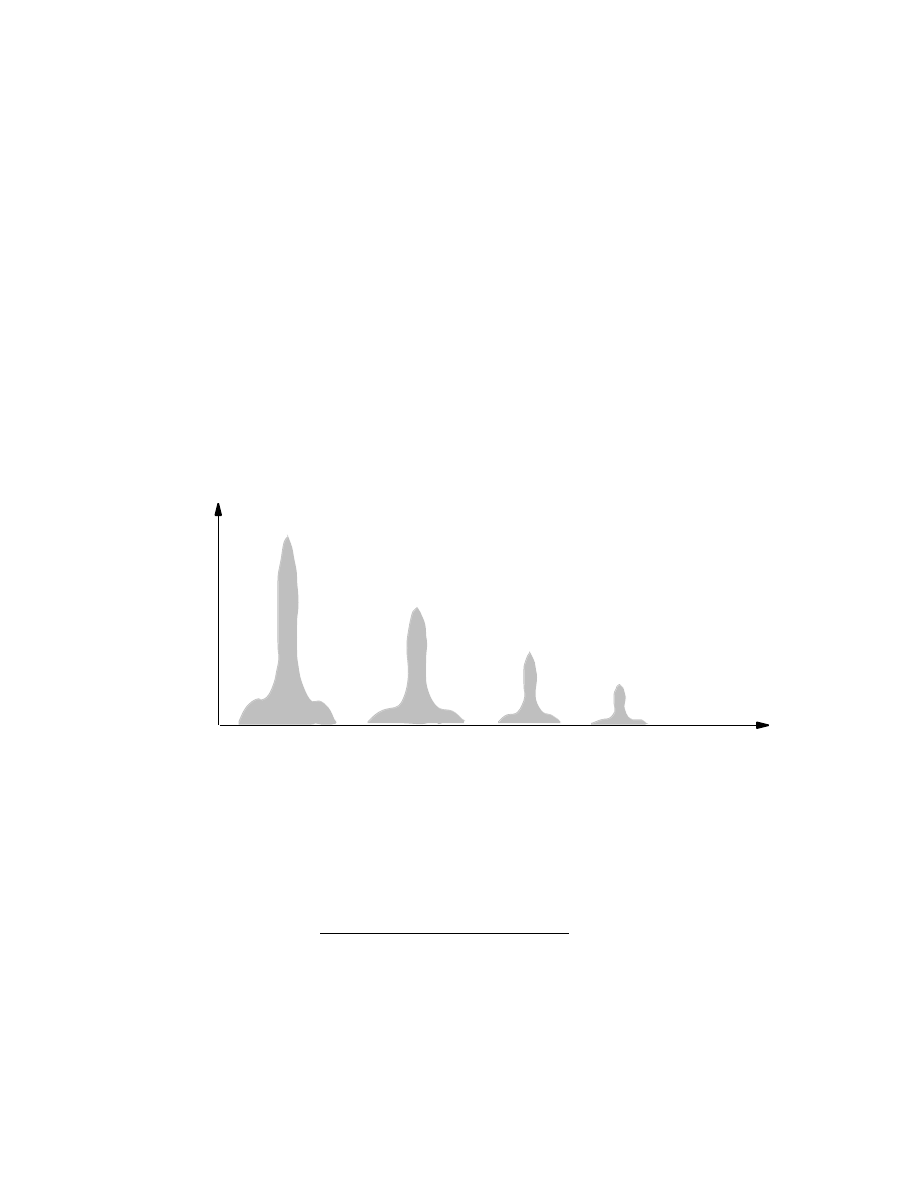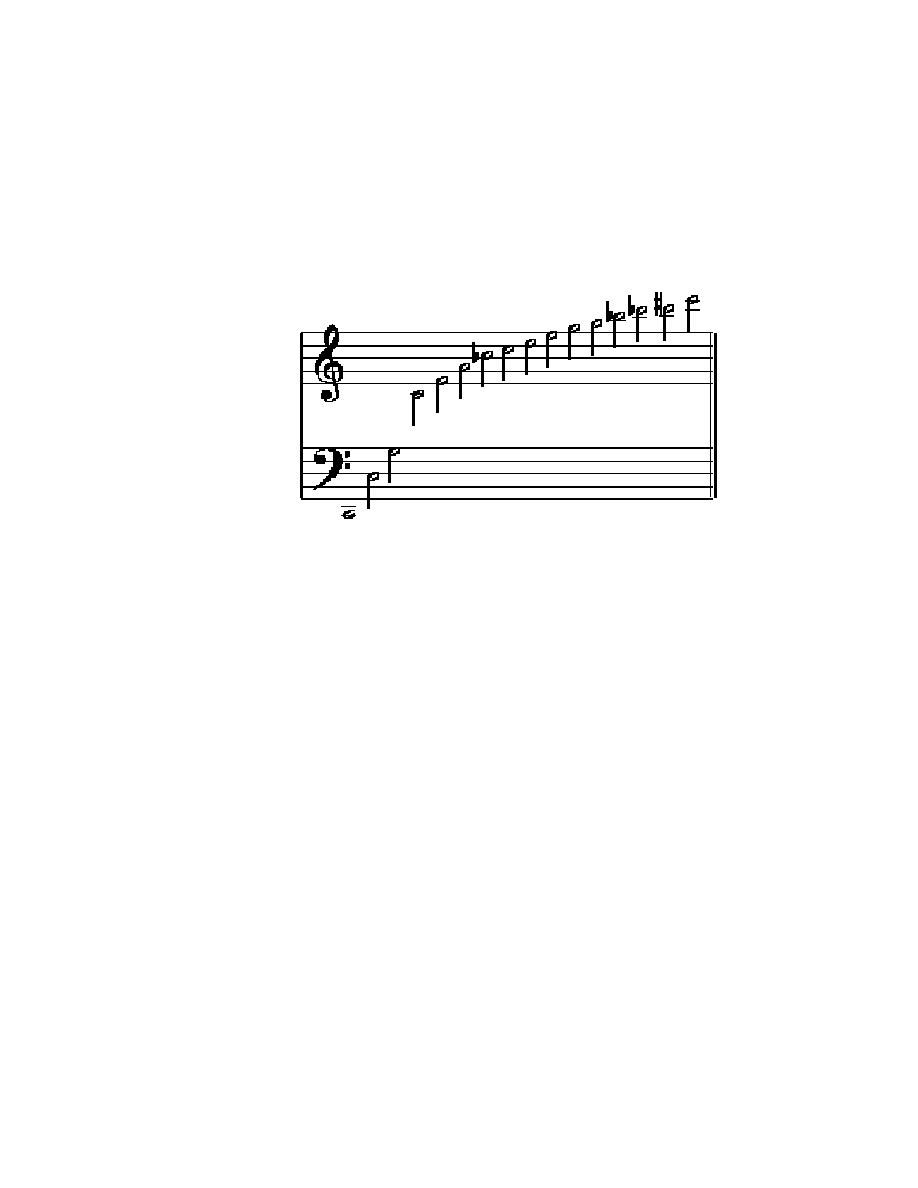ВУЗ: Казахская Национальная Академия Искусств им. Т. Жургенова
Категория: Учебное пособие
Дисциплина: Не указана
Добавлен: 03.02.2019
Просмотров: 12357
Скачиваний: 6

G
Guillotine splicer: A type of splicer for motion picture film and magnetic film that is gener-
ally used to assemble the workprint and edited soundtracks. For picture cutting, it slices
along the frame line between images. A second blade can slice magnetic film diagonally to
avoid pops on playback. While holding the two ends of picture or mag film to be joined in a
sprocketed channel, non-stretching tape is applied, completing the splice. The editor can
undo the splice if the result is not satisfactory, and may also reassemble the pieces in their
original, or any other, order. Also called a tape splicer.
gun microphone: A highly directional type of microphone used for long-distance recording,
e.g., for wildlife or surveillance. Also called a rifle microphone, shotgun microphone, or interfer-
ence microphone.


H
Haas effect: The Haas Effect refers to the brain’s ability to integrate incident sound and early
reflections into a single sound. Those early arrivals which occur within the first 5-35ms that
are not more than about 10dB louder than the direct sound will be combined and added to
the first arrival and localized to its source. If the delayed sound is more than 10dB louder or
the delay is greater than 35ms, the listener will perceive distinct echoes. This is a type of sen-
sory inhibition which causes the response to the direct sound source to inhibit response to the
reflections. Haas further noted the Precedence Effect: the position of a perceived sonic image
created by two sound sources depends on both the arrival times and the relative levels. If
two sound sources arrive at the same time and at the same level, human aural perception will
image the sound toward the centerpoint between the two sounds. If two sounds are equally
loud, the image will shift toward the earliest-arriving signal. Further, if one source is louder,
the image can be moved back to the center between the two sources by adding delay, pro-
vided that the delay time is less than 25ms. Beyond 25-30ms, the ear begins to hear the de-
layed sound as a discrete echo and the image shift effect no longer works. This phenomenon
is usually used to simulate a stereo image in a monophonic recording where the original sig-
nal is panned hard left and a copy is delayed (1-50ms delay) and panned hard right. The
Precedence Effect may be mitigated by slightly attenuating the volume of the dry sound.
half-space loading: The placement of a loudspeaker against a wall or other hard, reflective
surface. Such a placement typically improves the performance of a loudspeaker, enabling a
wider dynamic range, as well as improving the amplitude response of the speaker. An alter-
native to placing the loudspeaker in a free-field.
half track: (1) A recording format in which two parallel tracks are recorded in a single pass
on a
1
4
” tape, each track using slightly less than half of the tape width. On some machines, a
very narrow track with SMPTE or other synchronizing information is recorded and repro-
duced in the guardband. In this case, the data is frequency-modulated onto a very high-
frequency tone in order to minimize crosstalk or bleeding into the audio. (2) A tape machine
which records on half of the tape width only. This allows the tape to be inverted at the end of
its play time, doubling the recording time for a given length of tape. See also two-track, four-
track.
half-step: The musical interval of a minor second in a diatonic scale, equal to 100 cents. In
equal temperament, there are twelve semitones in each octave, so in the equal tempered scale,
the minor second has a frequency ratio of the
2
12
,
or about 6%. In just intonation, the minor
second has a frequency ratio of
15
16
. Also called a semitone. See scale.
half-time: See alla breve.
handles: Sound sections between works in a production track that enable the re-recording
mixer to cross-fade smoothly between shots with different backgrounds and/or room tones.
handshaking: In data transmission, the process of checking that a receiving device is ready
to receive, or that a transmitting device is ready to transmit. Also, the method whereby such
checking takes place. In MIDI, handshaking occurs in System-Exclusive, where messages are
sent between two devices to ensure that both are present and that both have received or
transmitted blocks of data.
hang: In film, the act of playing back a given element during a mix for the purposes of add-
ing the track(s) to the mix. “We won’t premix the Foley cloth but will hang it at the final mix
instead.”

H
hangover: The resonance which continues in a loudspeaker cone after the input signal has
stopped. See also damping factor, impulse response, ringing.
hard disk recording: A computer-based form of tapeless recording in which incoming audio
is converted into digital data and stored on a hard disk. Sort of the digital counterpart to di-
rect-to-disc analog (vinyl) recording, but being digital, the recording can be edited.
hard knee compression: A characteristic of certain designs of a compressor wherein nothing
happens to an input signal until the signal reaches the threshold limit, but as soon as it does,
the full level of gain reduction is applied, as determined by the ratio control setting. A graph
of the input gain against the output gain will show a sharp change in slope at the threshold
level. Compare with soft knee compression.
harmonic: A frequency that is a whole-number multiple of the fundamental frequency. For ex-
ample, if the fundamental frequency of the sound is 440Hz, then the first two harmonics are
880Hz and 1.32kHz. A harmonic is the same as a partial where the partials exhibit the prop-
erty that the overtones are mathematical multiples of the fundamental frequency. See har-
monic series, Appendix C.
Amplitude, dB
Frequency
Harmonic Spectrum
First Harmonic
Second Harmonic
Third Harmonic
Fourth Harmonic
harmonic distortion: The onset of harmonic distortion is the displacement of energy from a
single frequency to its harmonics. The presence of harmonic frequencies added to an output
signal by an electrical circuit or speaker, generally undesirable, caused by the system not be-
ing perfectly linear, such as when an amplifier is operated in a nonlinear portion of its transfer
curve. It is expressed as a percentage of the original signal:
(Total Signal - Fundamental Signal)
THD =
Total Signal
I
n a perfect audio device, such as an amplifier or tape recorder, the output signal would be a
replica of the input signal with no changes except possibly the amplitude of the signal. See
also doubling.
harmonic enhancement: A technique used by aural enhancers. See harmonic synthesis.
harmonic envelope: The natural decay in the harmonics of a natural instrument over time.

H
harmonic series: A set of all of the frequencies which are an integral multiple of the fre-
quency of the lowest tone, or fundamental. See harmonic, partial. Humans perceive a harmonic
series as a single pitch whose tonal quality is determined by the exact mix of related harmon-
ics present. Below are illustrated the first sixteen harmonics in the harmonic series for the
fundamental, C=65.4Hz. The notes indicating the 7th, 13th, 14th and 15th harmonics occur
slightly flat or sharp of the notated pitch.
65.4 Hz
.
.
. .
.
.
.
.
. .
.
.
.
.
.
.
The first sixteen harmonics for the fundamental C=65.4 Hz
harmonic series tuning: A tuning system which is based on the first sixty harmonics of the
tonic, resulting in a tuning not based on the usual diatonic scale. There are more notes per
octave as the tuning progresses up the harmonic series; the top 32 keys of a keyboard cover
one octave in pitch.
harmonic structure: The sequence of chords used in a piece of music.
harmonic synthesis: A technique used by aural enhancers which creates new high-frequency
harmonics not present in the original recording. Adding a small amount of carefully con-
trolled distortion can make a sound quality appear cleaner and more detailed. This happens
by sending some dry sound to a side-chain highpass filter. The output of the filter is processed
dynamically to add phase-shift and create synthesized HF (only) harmonics related to the dry
signal.
harmonizer: See pitch-shifter.
hat: See top hat.
haystack filter: See bell filter.